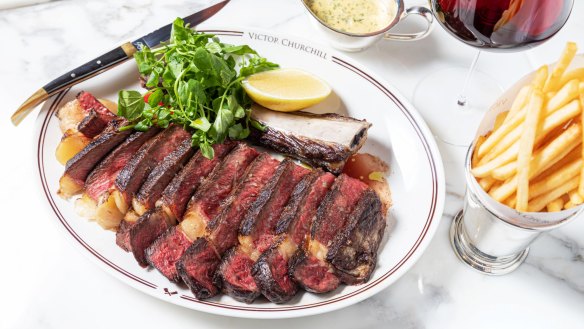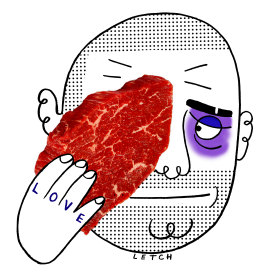How to order the perfect steak, from marble scores to dry-ageing – and the buttery cut of the moment
Baffled by the new options for steaks popping up on menus everywhere? Don’t be, with these expert tips to help you decipher the difference between grass-fed and grain-fed, scotch fillet and rib-eye, and the right level of doneness.
Grass-fed, 240-gram, 37-day, dry-aged, MBS6+ Zabuton, anyone? Ordering steak used to be as easy as rare or medium rare. Now it’s a minefield of choice, with the introduction of new cuts, dry-ageing and marble scores to help your steak be its best possible self. Luckily, Anthony Puharich of the award-winning boutique butcher Victor Churchill in Melbourne and Sydney has the answers.

What’s best – grass-fed or grain-fed?
Meat from grass-fed or pastured cattle has a clean, strong, beefy flavour, with a natural resilience and chew. Grain results in buttery richness and a softer texture. That said, you were given teeth so that you could chew.
What is the right level of doneness?
In spite of the variables of cut, thickness, age and fat content, “medium rare” (cooked to an internal temperature of 52C) will give you the best chance of enjoying a tender, juicy piece of meat.

How much should my steak weigh?
About 250 grams is ideal per person. A magnificent 800-gram T-bone would be perfect for two people, however, because the weight includes the bone.
My steak is MBS4. Is that good?
Marble scores out of 10 are technical grades that denote the amount of intramuscular fat found within the eye of the meat. MBS4, 5 and 6 are good indications of mouth-filling richness and quality. Beef with scores of 8, 9 or 9+ is mouth-fillingly rich, best enjoyed in smaller portions.
How come eye fillet is so expensive?
The tenderloin, from which the eye fillet is taken, is one of the least-used muscles on the animal; therefore one of the tenderest.
I had an amazing steak in New York called the Delmonico. Anyone doing it here?
Also known as the club steak, it’s a bone-in sirloin full of pure beefy flavour. Try it at Gimlet, Melbourne and Gowings, Sydney.

What’s the difference between scotch fillet and rib-eye?
Rib-eye is the cut that has it all; flavour, texture, juiciness, tenderness. Scotch fillet is simply boneless rib-eye, with a nugget of fat in the middle that renders on the grill, keeping things juicy.
How long should a steak be dry-aged?
Between 28 and 35 days’ ageing is optimum. Dry-ageing allows the natural enzymes of the meat to soften the fibres and intensify the flavour, resulting in deeply savoury notes. Wet-ageing is done in vacuum-packed bags.
I’m bored with sirloin. Give me something new.
You need Zabuton, Japanese for “little pillow”. This is the sexiest, butteriest, heavily marbled cut on the menu at the moment; otherwise known (unsexily) as chuck tail flap.
Last word?
A great steak is a beautiful piece of meat created by a whole chain of people invested in best-practice breeding, animal husbandry, farming, feeding, butchery, ageing, and cooking. Trust the farmer, butcher and chef, and enjoy.
The best recipes from Australia's leading chefs straight to your inbox.
Sign up